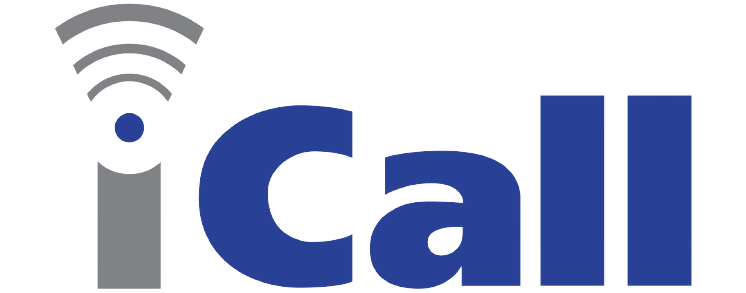Are you looking for ways to measure your call center productivity? If so, you’re in luck. This post will discuss eight call center metrics you can use to track your team’s performance.
By monitoring these metrics, you’ll be able to ensure your team is meeting its goals and providing excellent customer service. So, without further ado, let’s get started.
What Are Call Center Metrics?
Call center metrics are measurements used to assess the productivity and efficiency of a call center. These metrics range from average handle time to first call resolution, providing valuable insight into how well a call center performs in various areas.
But why are these metrics important? Think of it this way: How can you improve your productivity if you don’t measure it? Call center metrics provide a way to track progress and identify areas of improvement.
How Do They Influence Productivity?
Your call center metrics act as a gauge for productivity. By regularly monitoring and evaluating these metrics, call centers can adjust their strategies to increase efficiency and improve customer satisfaction.
In addition, some call center metrics, such as first call resolution and average handle time, may directly impact revenue.
Top 8 Call Center Metrics To Measure Your Productivity
Now that we know why these metrics are vital to call center success let’s dive into the top eight metrics to measure your productivity.
1. Overall Contact Rate
The overall contact rate is the percentage of customer inquiries a call center successfully reaches. This metric can be affected by factors like agent availability or technical difficulties, so it’s essential to monitor and take steps to improve it.
Improving the overall contact rate can be achieved through adequate staffing and scheduling. Make sure your call center has enough agents available to handle call volumes.
Additionally, investing in technology like call-back options can improve contact rates by allowing customers to schedule a call at their convenience.
2. Average Handle Time
The average handle time metric is one of the most crucial methods for determining contact center agent productivity. It’s the average time from when a customer initiates contact until they disconnect with the agent, including hold and transfer time. This metric also includes the agent’s post-contact work.
Average handle time can be interpreted in different ways by contact centers. For example, a lengthy handle time for customer service agents may point to deeper trouble, like difficulty resolving customer complaints or not knowing how to respond to inquiries.
On the other hand, if an agent’s average handle time is too short, it may be a sign that they don’t plan to offer any real help and are rushing the customer or not listening carefully. By using quality management software, you can ensure that every call is high-quality and meets customers’ needs.
In addition, you should ensure that your team has adequate training to answer customer questions promptly. Finally, give them quick access to the information they need to reach their key performance indicators.
3. First Call Resolution
First call resolution (FCR) is the percentage of customer inquiries resolved during the initial contact with an agent. A high FCR rate shows that a call center can effectively handle customer issues on the first try, leading to improved customer satisfaction and reduced call volumes.
To improve your FCR, you must focus on practical training for agents. Ensure they have the necessary information and resources to solve customer issues and good listening and problem-solving skills.
You can also improve FCR by allowing customers to access self-service options, like FAQs on your website or an online chat feature. Therefore, it’s wise to keep your FAQs up-to-date by adding inquiries you receive often.
4. Customer Experience
Customer experience is a crucial metric for any call center, as it measures customer satisfaction. It can be affected by various factors, including responsiveness and agent courtesy.
Improving customer experience starts with adequate training for agents to ensure they can handle customer inquiries politely and helpfully. Additionally, investing in technology like an interactive voice response (IVR) system can help streamline the customer experience by providing self-service options and reducing call wait times.
5. Abandonment Rate
The abandonment rate is the percentage of calls terminated before being answered by an agent. This metric can be affected by factors like long wait times or technical difficulties, so monitoring and taking steps to improve it is essential.
One way to improve the abandonment rate is by ensuring that your call center has enough staff to handle call volumes and investing in technology like an IVR system to reduce wait times. It also ties into your average handle time and first call resolution mentioned above.
So, by improving these two metrics, you can limit your abandonment rate and improve your customer experience.
6. Net Promoter Score
Net promoter score (NPS) is a customer satisfaction metric that measures how likely customers are to recommend your company’s products or services to others. It can be a helpful indicator of overall customer experience and provide valuable insight for improving call center performance.
To improve NPS, focus on creating a positive customer experience through courteous and responsive agents and offering helpful solutions to customer inquiries.
Additionally, regularly gather and analyze customer feedback to understand their needs and concerns. This can help inform any necessary changes or improvements in your call center processes.
7. Call Occupancy Rate
The call occupancy rate is the average time agents spend on calls, measured as a percentage of their total work time. So, it tells you how busy your agents are while at work. A high call occupancy rate can lead to agent burnout and reduced productivity.
Improving call occupancy rate once again starts with effective scheduling and staffing to ensure that there are enough agents to handle call volumes. Additionally, improving first-call resolution and average handle time can help reduce call occupancy by allowing agents to take calls more efficiently.
Finally, it’s essential to keep an eye on this metric and ensure that the agents get the rest they need to be productive. For example, when agents start showing signs of burnout, it may be wise to suggest they take a day off.
8. Average Speed Of Answer
The average speed of answer is the average amount of time it takes for agents to answer a call. This metric can impact the customer experience, as customers may become frustrated or hang up if they wait too long for their call.
You can improve your agents’ performance and reduce the average answer speed by ensuring that your agents work effectively and efficiently. However, even if your staff is highly productive, the average answer speed may suffer if you don’t have enough agents available.
By tracking these call center metrics, you can gain valuable insight into your performance and identify areas for improvement. As always, the key is continually striving for efficiency and effective problem-solving to provide the best customer experience.
How Outsourcing Your Call Center Can Help
While managing and improving call center metrics can be challenging for any company, outsourcing your call center can provide added support and resources.
In addition, outsourced call centers, such as iCall Services, have experienced staff and advanced technology. This allows for improved productivity, efficiency, and performance in meeting critical metrics like NPS, overall contact rate, call occupancy rate, and average speed of answer.
Partnering with an outsourced call center can also free up time and resources for your company to focus on core competencies and overall business growth. So, consider outsourcing as a solution to meeting and improving call center metrics and creating a positive customer experience.
Conclusion
So, what are call center metrics? They’re a way of measuring the productivity and success of your call center. By understanding which ones matter to you and tracking them consistently, you can ensure that your team is constantly meeting or exceeding their goals.
Outsourcing your call center can help take some of the pressure off and give you access to experts who know how to hit those targets. Ready to get started? Request a quote today!




